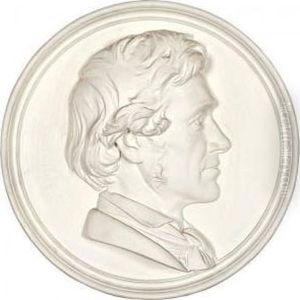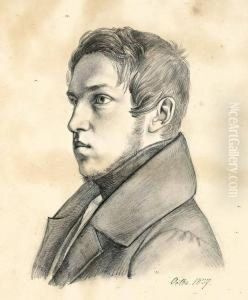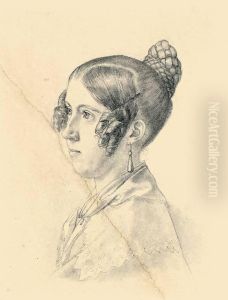Ernst Friedrich A. Rietschel Paintings
Ernst Friedrich August Rietschel was a prominent German sculptor, born on December 15, 1804, in Pulsnitz, Saxony. He is particularly known for his works that blend classical tradition with the ideals of the German Romantic movement, creating pieces that evoke a sense of national identity and historical significance.
Rietschel began his artistic education at the Dresden Academy of Fine Arts. He showed exceptional talent and, in 1825, moved to Rome to further his studies. This was a formative period in his career, during which he was heavily influenced by the work of Italian Renaissance masters and the burgeoning neoclassical style that was popular among many of his contemporaries.
After his time in Rome, Rietschel returned to Dresden, where he became a professor at the Academy and began to receive significant commissions. Among his notable early works is the 'Goethe and Schiller Monument' in Weimar, unveiled in 1857, which depicts the two great German literary figures and has become an iconic symbol of German cultural heritage.
Throughout his career, Rietschel created a variety of works ranging from portrait busts to monumental statues, and he was a key figure in the development of 19th-century German sculpture. His style evolved to become more expressive and less bound by the strictures of neoclassicism, reflecting the changing tastes and philosophical outlooks of the period.
Ernst Rietschel's contributions to art were recognized with numerous honors and widespread acclaim. His work continues to be celebrated for its craftsmanship and its role in shaping the German artistic landscape of the 19th century. Rietschel passed away on February 21, 1861, in Dresden, but his legacy lives on through his sculptures, which can be found in public spaces and museums throughout Germany and Europe.


